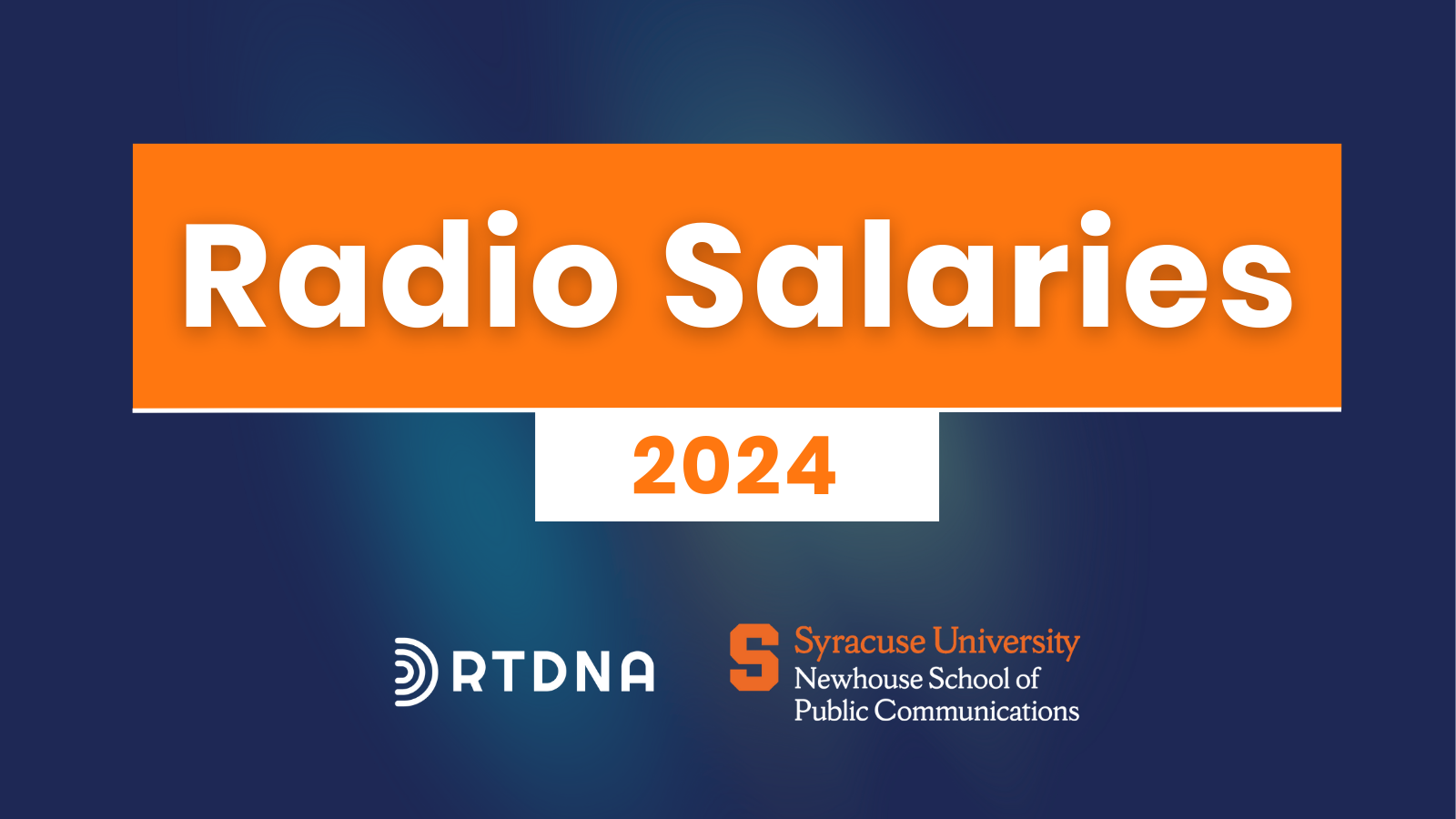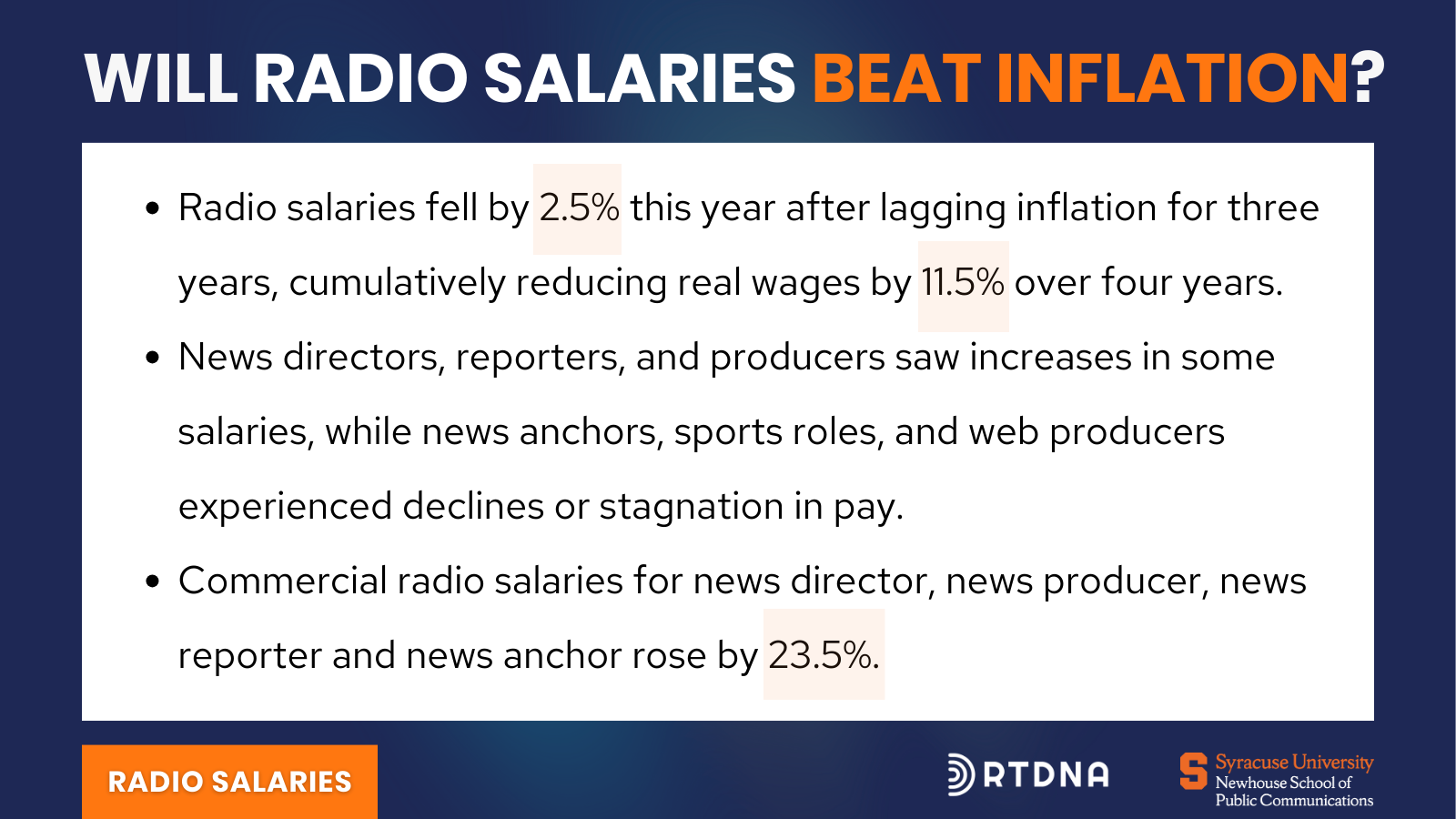Radio salaries head backwards

By Bob Papper and Keren Henderson
July 19, 2024 — After three years of meager salary increases — all of which lagged inflation — this year is worse. Overall, radio salaries actually fell 2.5%. With inflation at 3.1% for the year, that means real wages dropped by 5.6%. But why they fell may surprise you.
In terms of real wages (actual wages minus inflation), radio salaries lost 0.5% in 2021, 6.6% in 2022, 1.9% in 2023, and 2.5% in 2024. That’s a total wage loss of 11.5% over the last four years.

There is some good news in radio salaries. For news directors, the median salary stayed the same, but the average salary went up 6.7%. Reporters are also mixed, with the average salary dropping 0.9%, but the median salary is going up 12.5%. News producers did even better with average salary up 5% and median salary up 10.4%. But that’s where the good news stops. News anchor, sports anchor and sports reporter all lost ground in both average and median salaries. Web producer/editor dropped slightly on average and held even on median.
Now we see more clearly what’s happening in radio salaries. Historically, non-commercial radio salaries have been substantially higher than commercial radio salaries. This year, that’s not the case. When we look at large and major markets, all the average commercial salaries are higher than non-commercial salaries, and median salaries are fairly close. But the actual story is what took place between last year and this year. Overall, commercial radio salaries — for the four positions above in large and major markets — went up a whopping 23.5%. Non-commercial salaries went down 8% from a year ago. So the drop in radio news salaries lies almost entirely in the non-commercial world.

Purchase Full Radio Salary Report (Free for Members)
About the Authors
Bob Papper is Research Professor of Broadcast and Digital Journalism at Syracuse University and has worked extensively in radio and TV news.
Keren Henderson is Associate Professor of Broadcast and Digital Journalism at Syracuse University.
This research was supported by the S. I. Newhouse School of Public Communications at Syracuse University and the Radio Television Digital News Association.
About the Survey
The RTDNA/Newhouse School at Syracuse University Survey was conducted in the fourth quarter of 2023 among all 1,876 operating, non-satellite television stations and a random sample of 4,764 radio stations. The television response rate is different for every question, but Valid responses came from as many as 1,387 television stations (73.9%) and 631 radio news directors and general managers representing 1,902 radio stations. Some data sets (e.g. the number of TV stations originating local news, getting news from others and women TV news directors) are based on a complete census and are not projected from a smaller sample.
